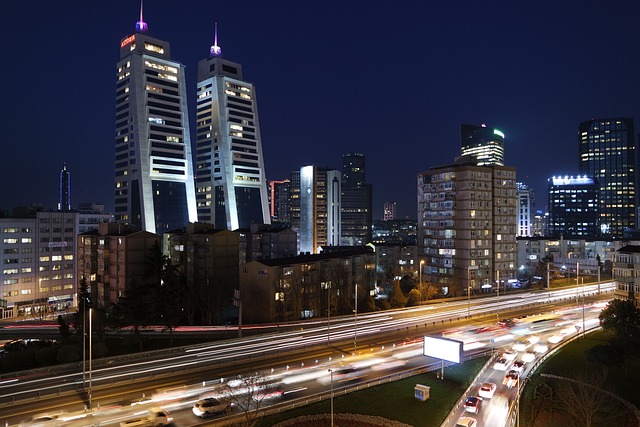Motorways and Nature: A Love-Hate Relationship
The development of motorways has transformed the landscape of modern transportation, enabling swift travel across vast distances and facilitating economic growth. However, this progress comes at a considerable cost to the natural environment. The relationship between motorways and nature is complex and multifaceted, blending elements of both affection and aversion. In this article, we will explore the various dimensions of this relationship, examining the benefits that motorways offer, the detrimental effects they impose on ecosystems, and the ongoing efforts to reconcile these two often conflicting forces.
The Benefits of Motorways
Motorways serve several functions that contribute to human advancement and societal gains. They facilitate communication, trade, and mobility, thereby boosting the economy and creating job opportunities. The heavy-duty infrastructure supports industries such as logistics, tourism, and agriculture, allowing for the efficient movement of goods and people. Let’s delve into some specific advantages of motorways:
Economic Growth and Development
One of the most significant benefits of motorways lies in their ability to stimulate economic growth. By connecting urban centers with rural areas, they reduce travel time and costs associated with logistics and commuting. Businesses can access a broader market, and consumers gain access to a wider range of products and services. The infrastructure also attracts investments, as companies seek locations that are easily accessible.
Enhanced Mobility and Accessibility
Motorways provide a high-capacity route that accommodates a large volume of traffic, allowing individuals to travel more efficiently. Whether for work, leisure, or emergencies, the ability to traverse long distances quickly can enhance one’s quality of life. Communities that are connected by motorways often report better access to essential services such as healthcare, education, and recreational facilities.
Contributing to Tourism
Motorways play a crucial role in the tourism industry, providing easy access to scenic landscapes, historic sites, and cultural attractions. Tourists frequently choose road travel because it allows them to explore diverse regions at their own pace. The revenue generated from tourism can contribute significantly to local economies, directly impacting employment and infrastructure development.
The Environmental Cost
Despite the numerous advantages, the construction and expansion of motorways exert considerable pressure on the environment. The inevitability of habitat destruction, pollution, and other ecological disruptions raises pressing concerns among environmentalists and advocates for sustainable development. Here, we will discuss some of the primary environmental issues arising from motorway infrastructure.
Habitat Destruction and Fragmentation
When motorways are built, vast areas of land are often cleared to create the necessary space. This deforestation and land adaptation can lead to habitat loss for countless species. As wildlife habitats are disrupted, the natural world suffers from fragmentation, causing populations to decline due to isolation. Animals may find it difficult to reproduce and search for food, ultimately leading to a decline in biodiversity.
Pollution and Its Effects
Motor vehicles are significant contributors to air pollution, emitting harmful gases that can impact human health and the environment. The concentration of vehicles on motorways leads to increased carbon emissions, contributing to climate change. Additionally, runoff from roads carries pollutants into waterways, harming aquatic ecosystems by disrupting nutrient levels and contaminating habitats.
Risks of Wildlife Collisions
Motorways create a perilous environment for wildlife. The speed of traffic significantly raises the risk of accidents involving animals attempting to cross the road. These collisions can not only be fatal for the wildlife but also pose dangers to drivers. In some regions, specially designed wildlife crossings and barriers have been developed to mitigate these risks, but they are still not ubiquitous.
Innovative Solutions: Finding Balance
As public awareness grows regarding the environmental repercussions of motorways, there has been an increased push for innovative solutions that aim to harmonize transportation needs with environmental preservation. Various methods have emerged to create a more sustainable approach to roadways without forgoing the benefits they offer.
Wildlife Corridors
One of the most promising solutions to the problem of habitat fragmentation is the establishment of wildlife corridors. These corridors are designated pathways that allow animals to cross roads safely, maintaining genetic diversity and population viability. By installing overpasses, tunnels, and other structures, planners can help mitigate the negative impact of motorways on local wildlife.
Green Infrastructure and Eco-Friendly Practices
Incorporating green infrastructure into motorway design offers another way to limit environmental harm. Plants and natural landscapes can be integrated into the roadside, reducing runoff and improving air quality. Furthermore, environmentally friendly materials and construction practices can minimize pollution during the building process and throughout the lifespan of the roadway.
Adoption of Electric Vehicles
The growing adoption of electric vehicles (EVs) has the potential to significantly reduce the environmental impact of motorways. Since EVs produce zero tailpipe emissions, their widespread use can lead to improved air quality. Policymakers and infrastructure developers are increasingly investing in EV charging networks along motorways to enhance the accessibility of these cleaner modes of transport.
Public Awareness and Community Engagement
Public perception and awareness play a pivotal role in shaping the future of motorways and their relationship with nature. Engaging communities in discussions about the environmental impact of transportation infrastructure can lead to greater support for sustainable practices and policies.
Education and Advocacy
Educational initiatives that inform citizens about the ecological ramifications of motorways can galvanize grassroots movements advocating for change. These initiatives might include workshops, outreach programs, and community events aimed at raising consciousness regarding the importance of preserving natural habitats.
Participatory Planning Processes
Involving community members in the planning and decision-making processes related to motorway development fosters a sense of ownership and accountability. By incorporating local voices, planners may develop solutions that balance transportation needs with ecological preservation while also garnering public support for environmental initiatives.
The Future of Motorways and Nature
As we move further into the 21st century, the love-hate relationship between motorways and nature will undoubtedly evolve. With advancements in technology and a growing understanding of environmental issues, there is hope for a future where the benefits of motorways can coexist more harmoniously with nature.
Smart Infrastructure
Emerging technologies such as smart traffic systems can enhance motorway efficiency and reduce congestion, minimizing the environmental burden. These innovations could lead to fewer emissions and a lighter ecological footprint, allowing motorways to serve their purpose while being more environmentally conscious.
Resilient Ecosystems
As we innovate, there remains a pressing need to build resilient ecosystems that can withstand the stresses of urbanization and industrialization. Strategic conservation efforts, habitat restoration projects, and biodiversity enhancement initiatives could help strengthen ecosystems impacted by motorway construction.
Conclusion
The relationship between motorways and nature embodies a spectrum of interconnections laden with complexities. While motorways bring economic benefits and improved mobility, they simultaneously pose significant challenges to the natural environment. The quest for a resolution to this dichotomy is ongoing, requiring collective efforts from governments, communities, and environmental organizations.
Through innovation, education, and community engagement, it is possible to bridge the gap between human advancement and environmental stewardship. The challenge lies in finding the balance—ensuring that motorways serve their purpose while safeguarding the natural world that we all depend on.



